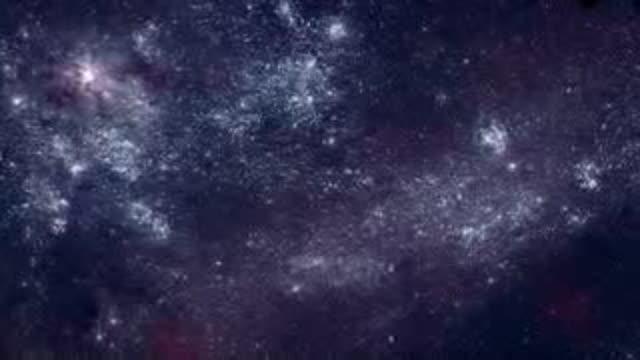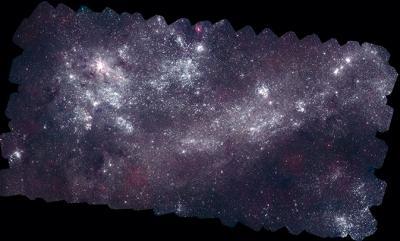Despite their modest sizes, the galaxies loom large in the sky because they are so close to us. Both extend far beyond the UVOT's field of view, which meant thousands of images were needed in order to cover both galaxies in three ultraviolet colors centered at wavelengths of 1,928 angstroms, 2,246 angstroms, and 2,600 angstroms.
Viewing in the ultraviolet allows astronomers to suppress the light of normal stars like the sun, which are not very bright at such higher energies, and provides a clearer picture of the hottest stars and star-formation regions. No telescope other than UVOT can produce such high-resolution wide-field multicolor surveys in the ultraviolet. Swift's wide-field imaging capabilities provide a powerful complement to the deeper, but much narrower-field imaging power of NASA's Hubble Space Telescope.
To produce the 160-megapixel LMC mosaic, Swift's UVOT acquired 2,200 snapshots for a cumulative exposure of 5.4 days. The 57-megapixel SMC image comprises 656 individual images with a total exposure of 1.8 days.
Both images have an angular resolution of 2.5 arc seconds, which is a measure of their sharpness. Sources separated by this angle, which is equivalent to the size of a dime seen from 1mile away, are visible as distinct objects.
"With these mosaics, we can study how stars are born and evolve across each galaxy in a single view, something that's very difficult to accomplish for our own galaxy because of our location inside it," Immler said.
The Large and Small Magellanic Clouds are readily visible from the Southern Hemisphere as faint, glowing patches in the night sky. The galaxies are named after Ferdinand Magellan, the Portuguese explorer who in 1519 led an expedition to sail around the world. He and his crew were among the first Europeans to sight the objects.

New surveys conducted by NASA's Swift provide the most detailed overviews ever captured in ultraviolet light of the Large and Small Magellanic Clouds, the two closest major galaxies to our own. Swift team member Stefan Immler, who proposed the imaging project, narrates this quick tour.
(Photo Credit: NASA's Goddard Space Flight Center)

Nearly a million ultraviolet sources appear in this mosaic of the Large Magellanic Cloud, which was assembled from 2,200 images taken by Swift's Ultraviolet/Optical Telescope. The 160-megapixel image required a cumulative exposure of 5.4 days. The image includes light from 1,600 to 3,300 angstroms -- UV wavelengths largely blocked by Earth's atmosphere -- and has an angular resolution of 2.5 arcseconds at full size. The LMC is about 14,000 light-years across. Slide your cursor over the image to compare the galaxy's appearance in optical light with this ultraviolet portrait.
(Photo Credit: UV image : NASA/Swift/S. Immler (Goddard) and M. Siegel (Penn State)Visible image : Axel Mellinger, Central Michigan Univ.)
Source: NASA/Goddard Space Flight Center